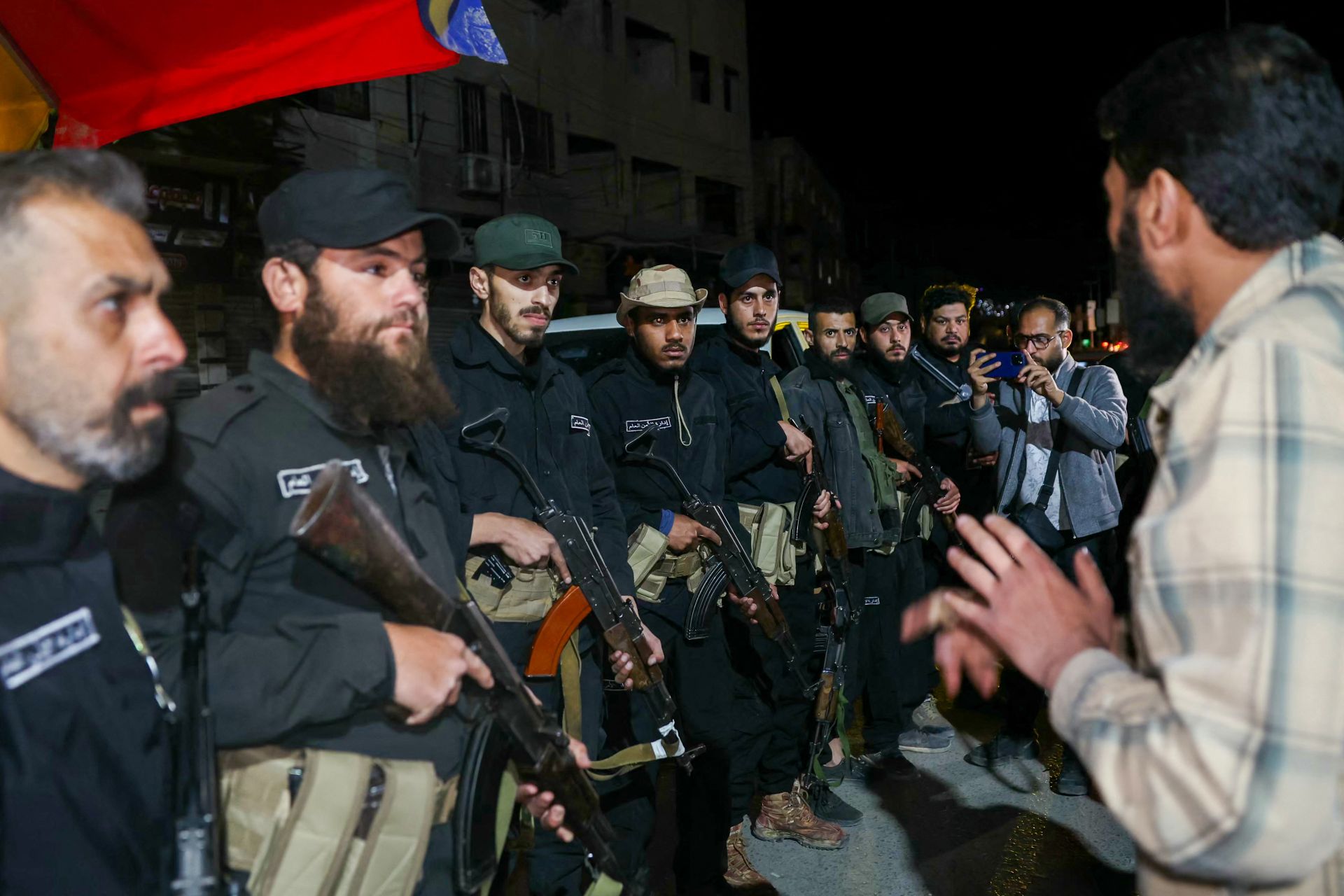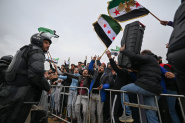- Home
- Middle East
- Who Are the New Security Forces in Syria ?

Members of Syria's security deploy at the entrance of Jaramana near Damascus early on May 2, 2025 ©OMAR HAJ KADOUR / AFP
Deadly sectarian violence in Syria this week between security forces and Druze fighters follows massacres of Alawites in March, with government forces and affiliated gunmen involved in both outbreaks.
Many questions have been raised on the identity of fighters in the country's new security forces, and the interim government's ability to control them as it tries to impose its authority over all of Syria.
Who are these groups, how do they operate, and what areas remain out of their control ?
Who are the new security forces?
Two months after ousting longtime Syrian ruler Bashar al-Assad, Syria's new authorities led by now-interim President Ahmed al-Sharaa have dissolved the army and security agencies linked to the former regime.
The administration also dissolved all armed factions including Sharaa's Hayat Tahrir al-Sham (HTS), which led the lightning offensive that toppled Assad in December.
Factions that agreed to dissolve were integrated into the defence ministry, and General Security, the country's new police, opened the door to recruits as part of both institutions' efforts to create a new army and security force.
Factions from Daraa in the south, as well as Turkey-backed factions in the north and Islamist groups also joined the ministry's forces.
These factions retained their weapons and remain deployed in their areas of operation.
However, HTS and Islamist groups aligned with it remain dominant, especially in their original stronghold in Idlib in the northwest and in Damascus.
HTS was known as Al-Nusra Front before it broke ties with Al-Qaeda in 2016. Several Western states still proscribe it as a terrorist organisation.
Factions considered to be elite forces are stationed around Damascus and also guard the presidential palace.
General Security patrols and operates checkpoints in several areas, including the capital.
"When HTS seized the Presidential Palace in December, it quickly adopted the language and symbols of the state," Syria expert Lars Hauch told AFP.
However, "entities with state-like names, such as the 'General Security Directorate', are in reality composed of HTS's core fighting units," he added.
The General Security is considered to be Sharaa's most powerful military arm.
Hauch said that "despite their nominal integration", most factions now under the defence ministry "remain primarily loyal to their original commanders".
"In practice, the Ministry functions less as a centralised state institution and more as an operations room dominated by HTS," he added.
What about their performance?
The new authorities have repeatedly pledged to protect all religious groups and include all of Syrian society in the transition, with international pressure linking the lifting of sanctions to monitoring their political conduct.
Sharaa has repeatedly stressed the priority of preserving unity, peace, and building a new state that protects human rights.
But sectarian clashes in March in which more than 1,700 people, mostly Alawites, were killed in coastal areas sparked widespread condemnation.
Some militants even videoed themselves killing civilians after insulting and beating them.
In the latest clashes involving Druze fighters, during which around 100 fighters on both sides were killed, pro-government fighters filmed videos -- unverified by AFP -- showing sectarian slogans being chanted and detained Druze being insulted.
According to Hauch, "the most egregious abuses are carried out by a powerful but relatively small number of extremists" amid widespread sectarian tensions nationwide.
"The faction fighters must change their attire and behave like soldiers in a national army," military expert Riad Kahwaji told AFP.
The authorities must "speed up the mechanism for rehabilitating and integrating former fighters, and recruit new members from all Syrian components to build trust internally and externally".
"The army's doctrine must revolve around preserving the civil state and defending all its people and components," Kahwaji said.
What areas do they not control?
The transitional authorities face major challenges preventing them from asserting control over all of Syria, given the presence of armed groups with varying loyalties and also regions where they lack popular support.
In the northeast, the presence of Kurdish fighters poses a challenge despite an agreement to integrate the Kurdish-led autonomous administration's institutions into the state by year-end.
The Kurds are demanding a decentralised system, which Sharaa rejects, and want to maintain their well-organised mixed-gender military forces.
In Sweida in the south, the Druze heartland, clerics and Druze factions declared Thursday that they form an "inseparable part" of the Syrian state and reject "secession". They called on the state to enforce its presence but exclusively through local personnel.
Hauch said Sharaa's control "remains relatively limited outside of Damascus and Idlib".
But "the ambiguity resulting from the incomplete integration of armed groups" allows him to "employ coercion to consolidate his rule".
This also enables him to continue presenting himself as "someone uniquely capable of containing extremists, rogue commanders, and other vaguely defined 'gunmen'", Hauch said.
AFP
Read more




Comments